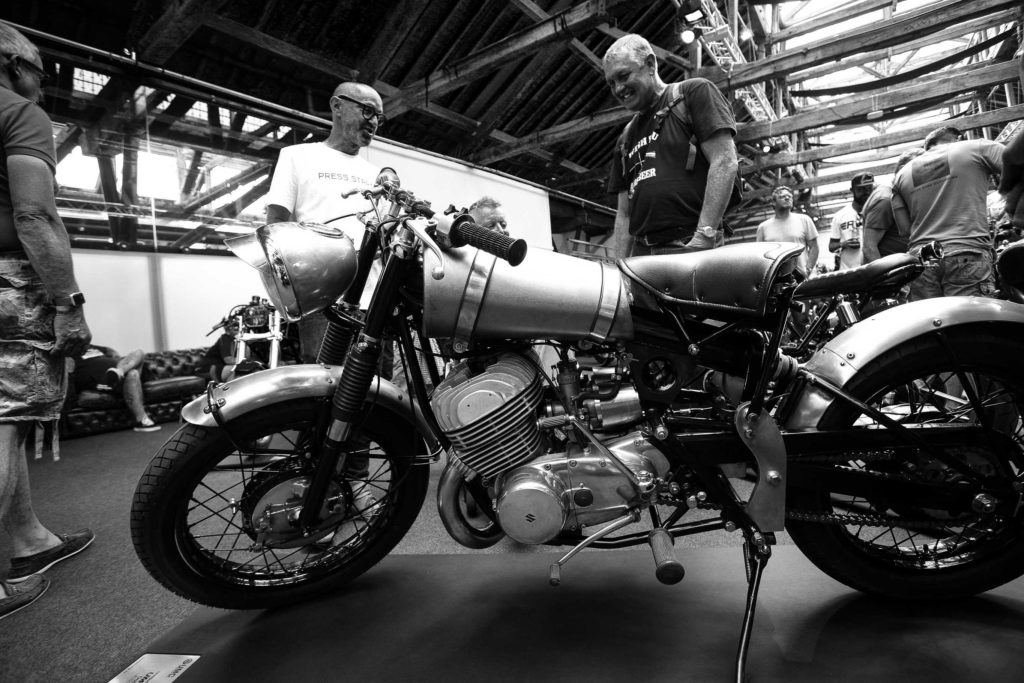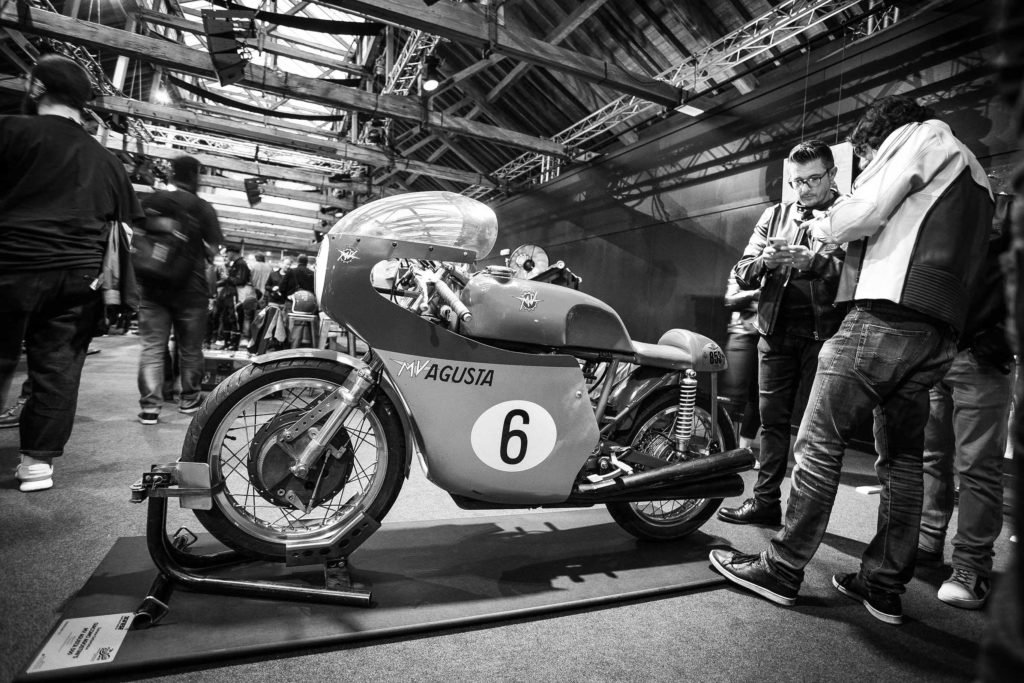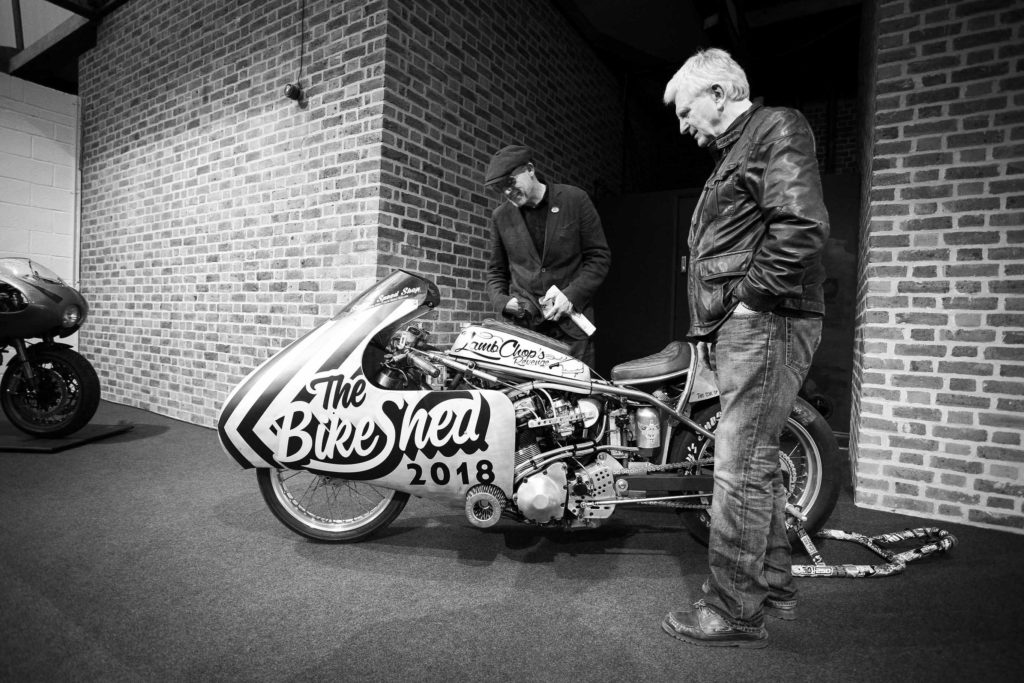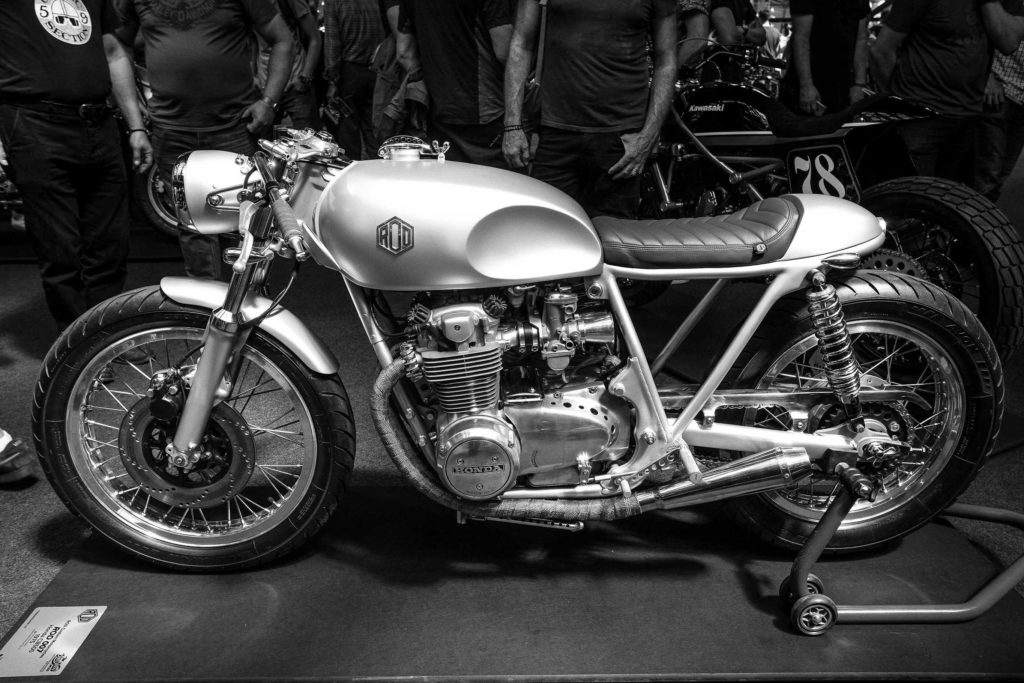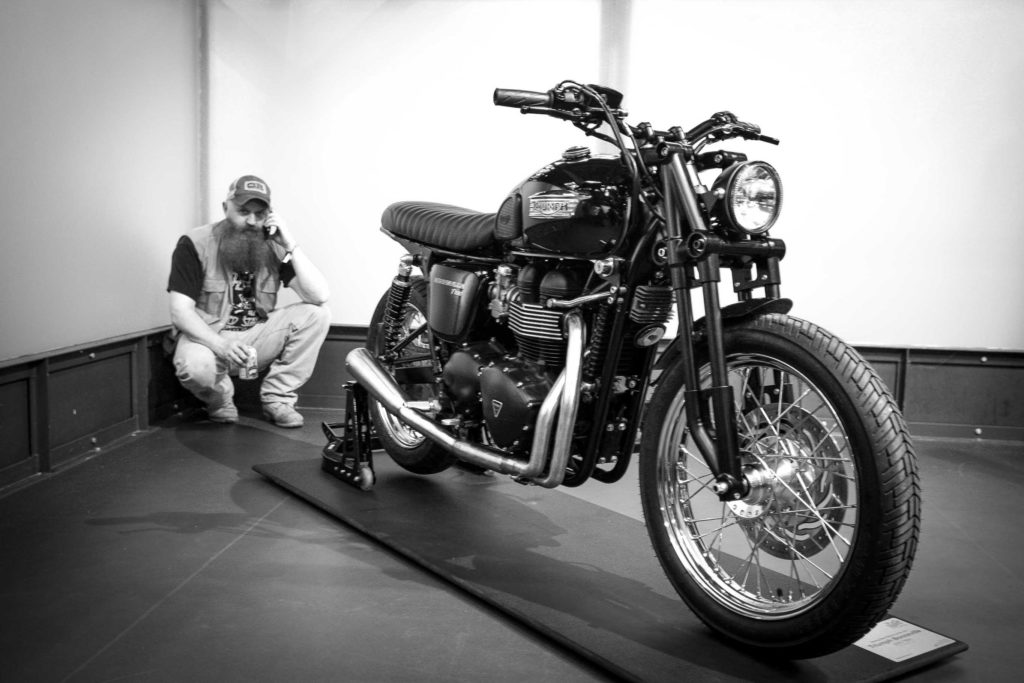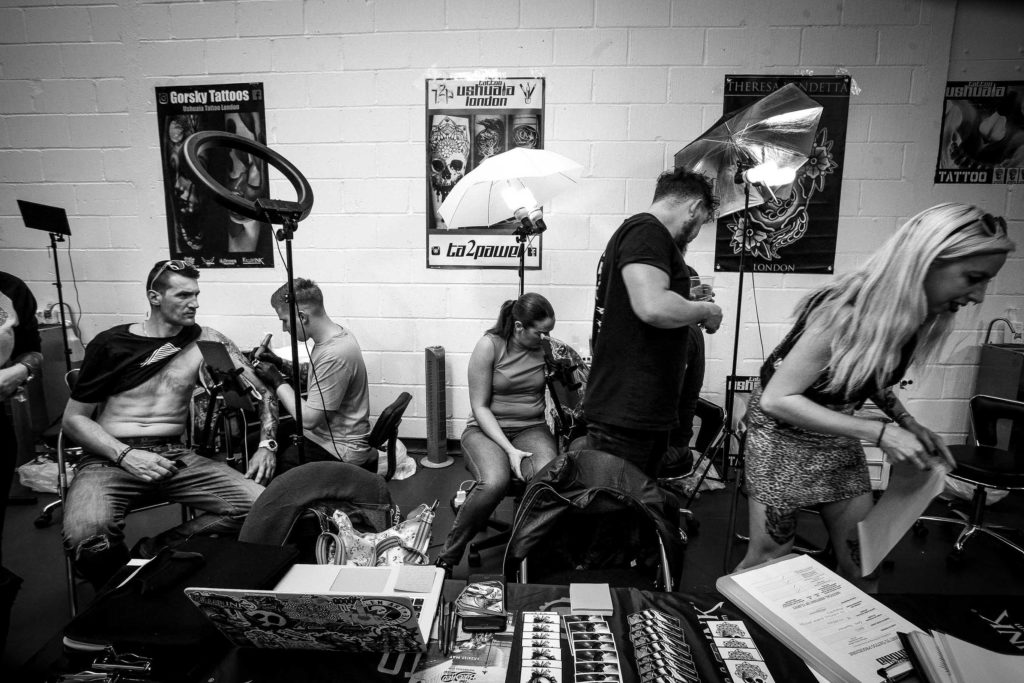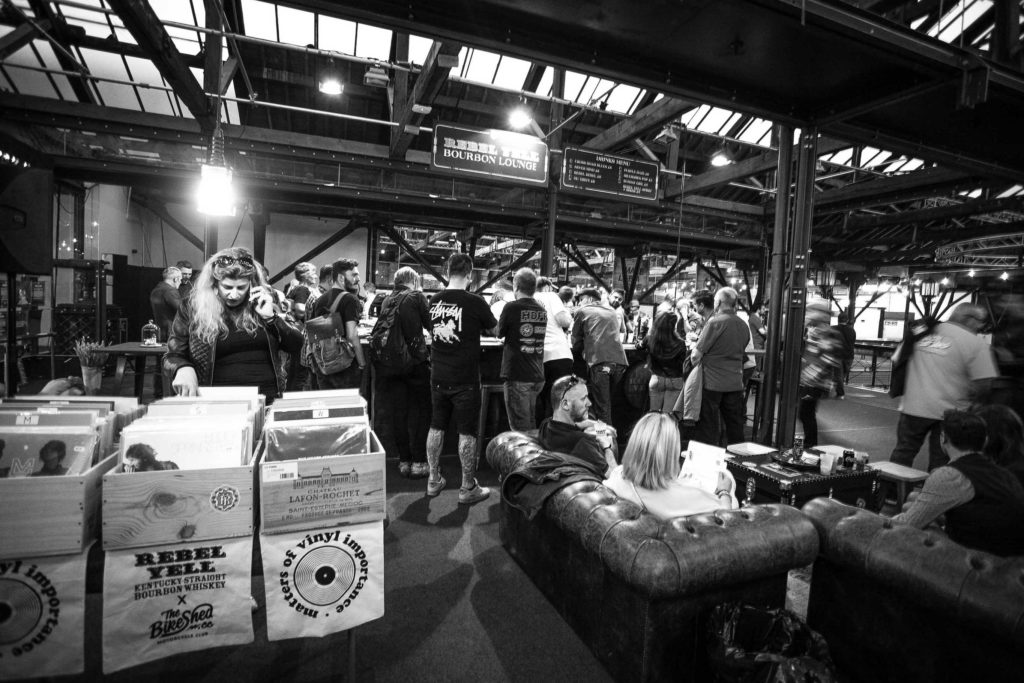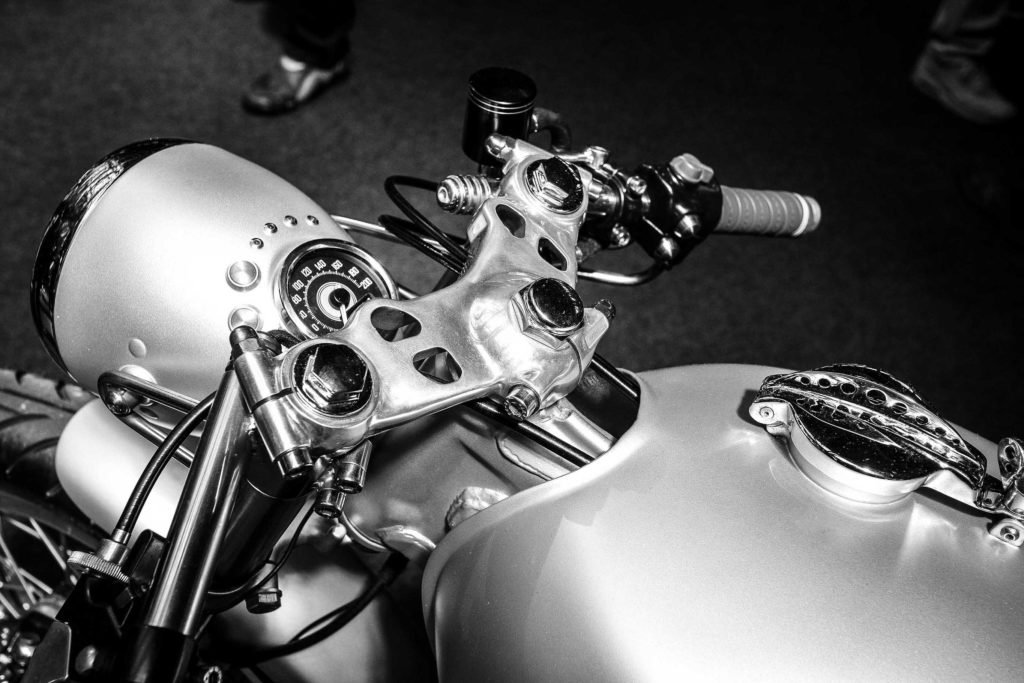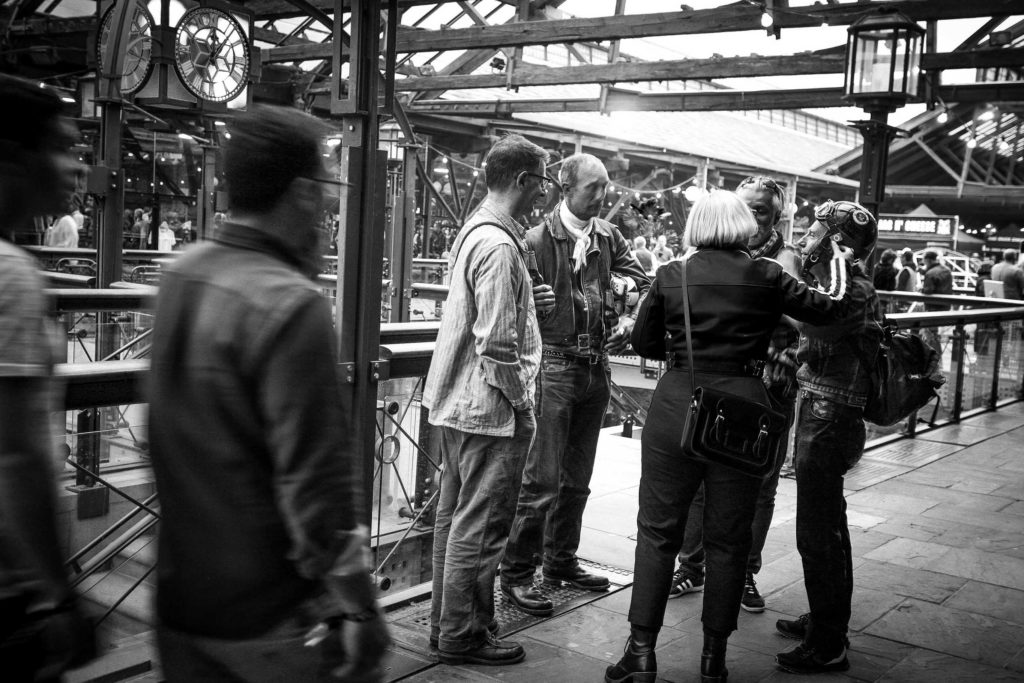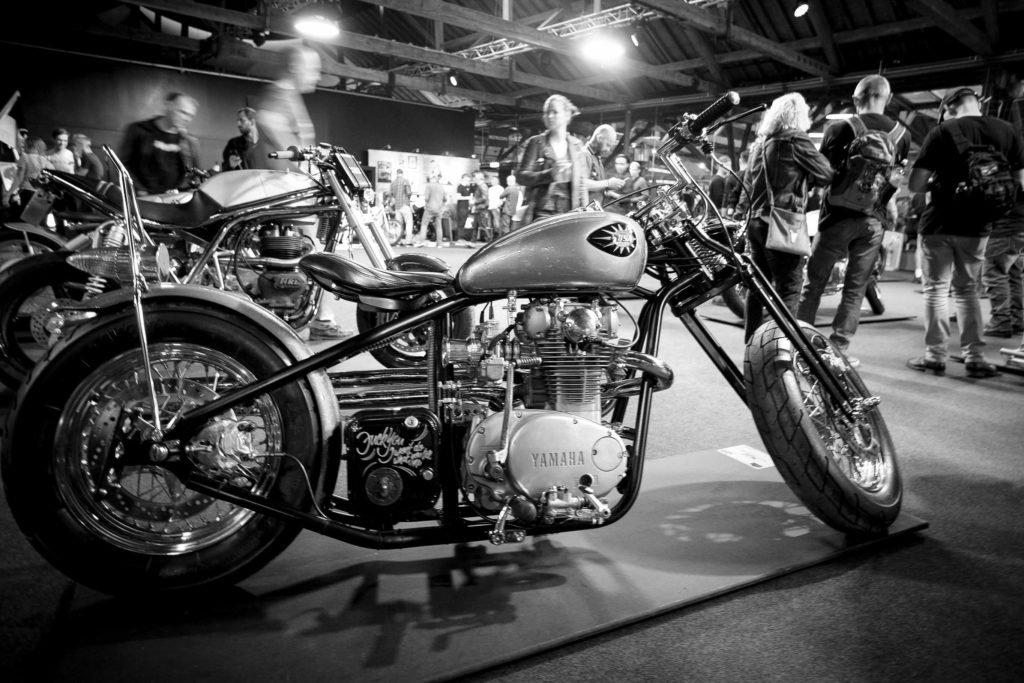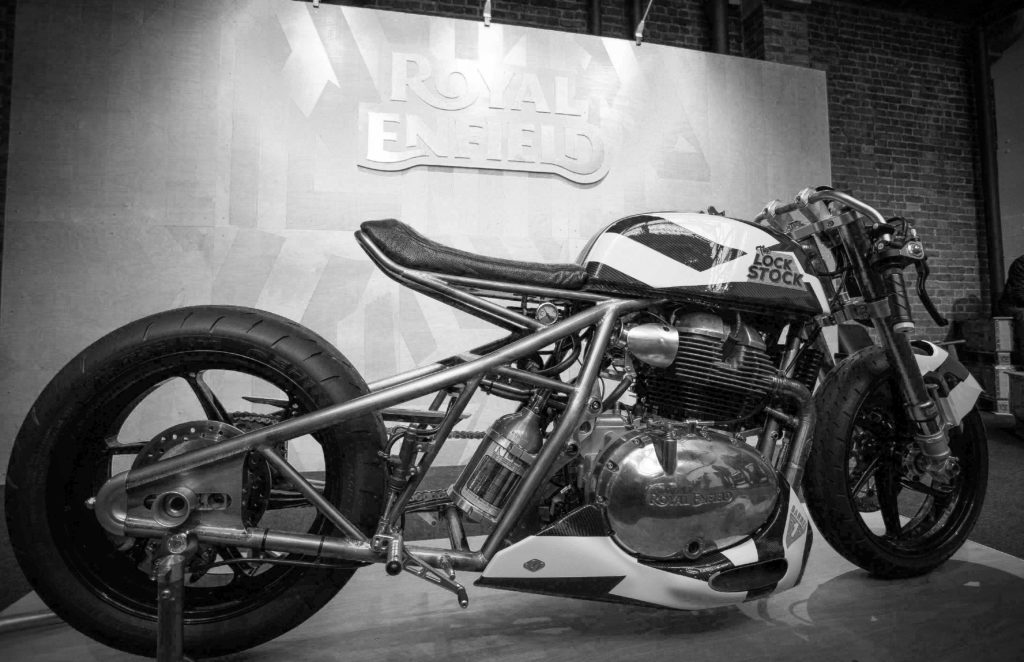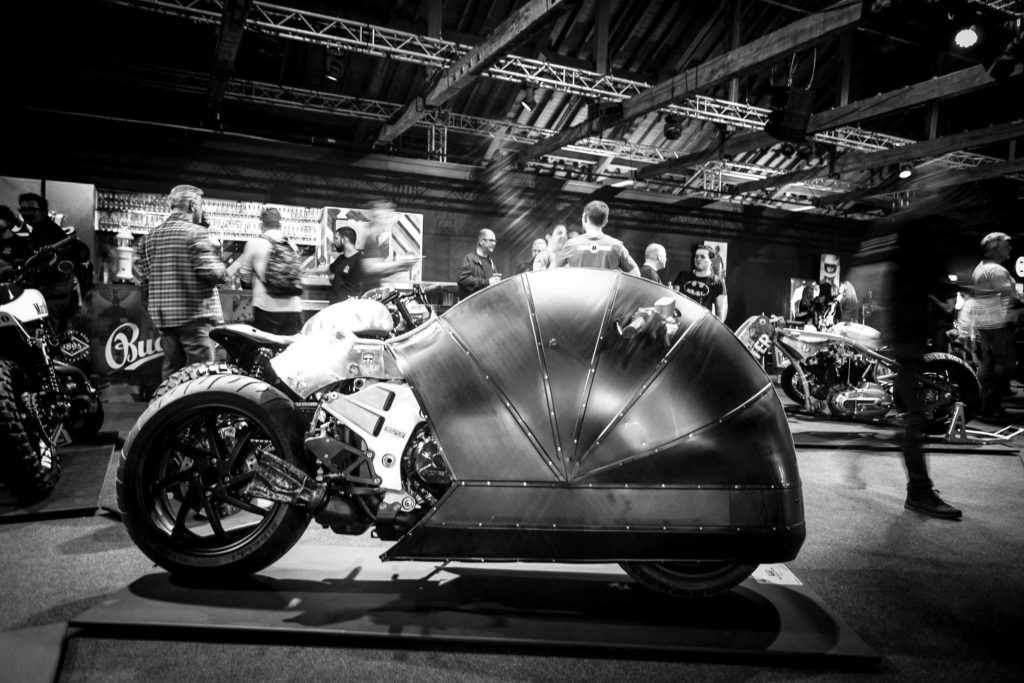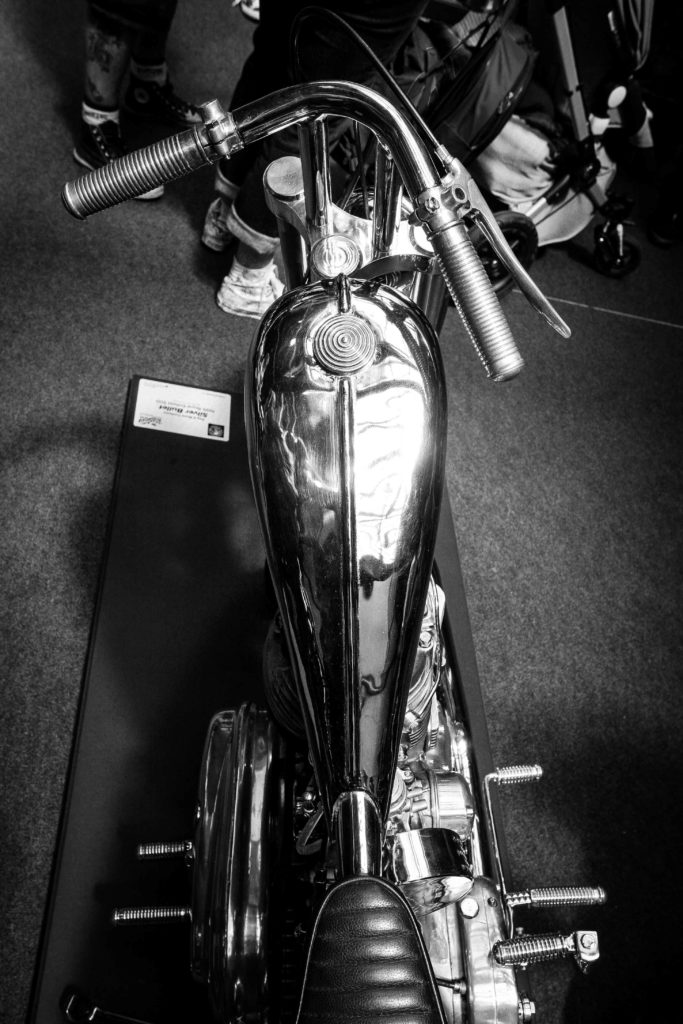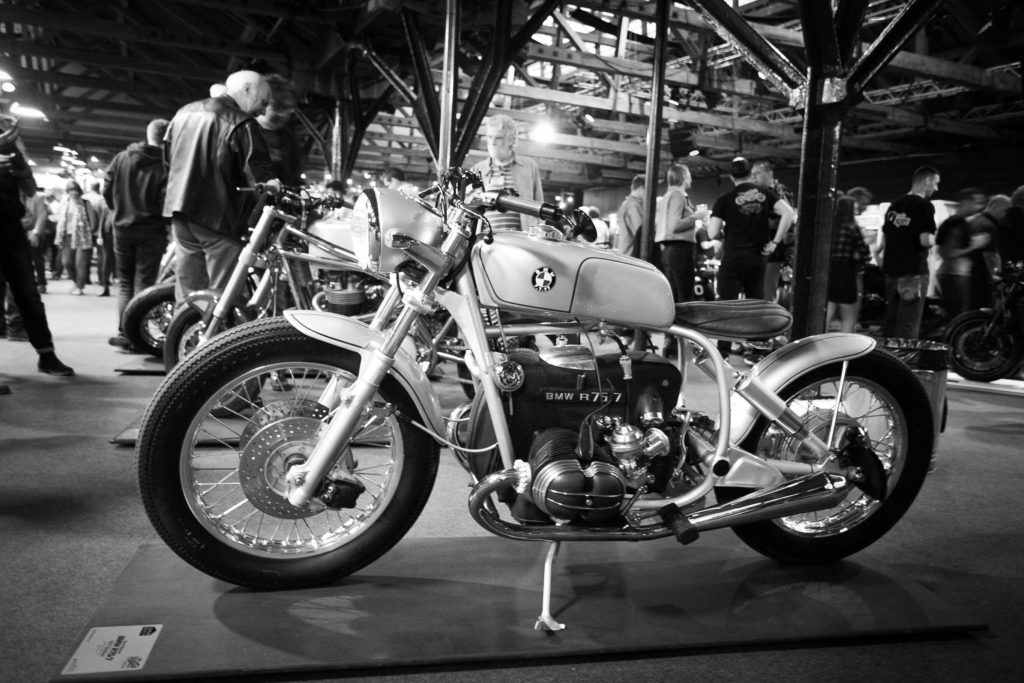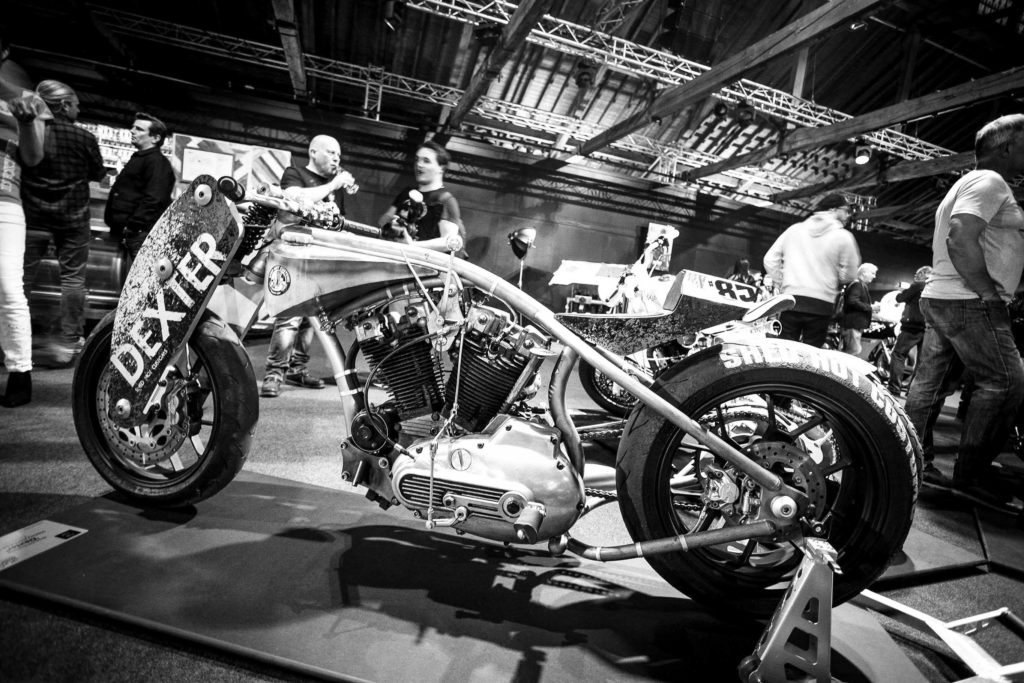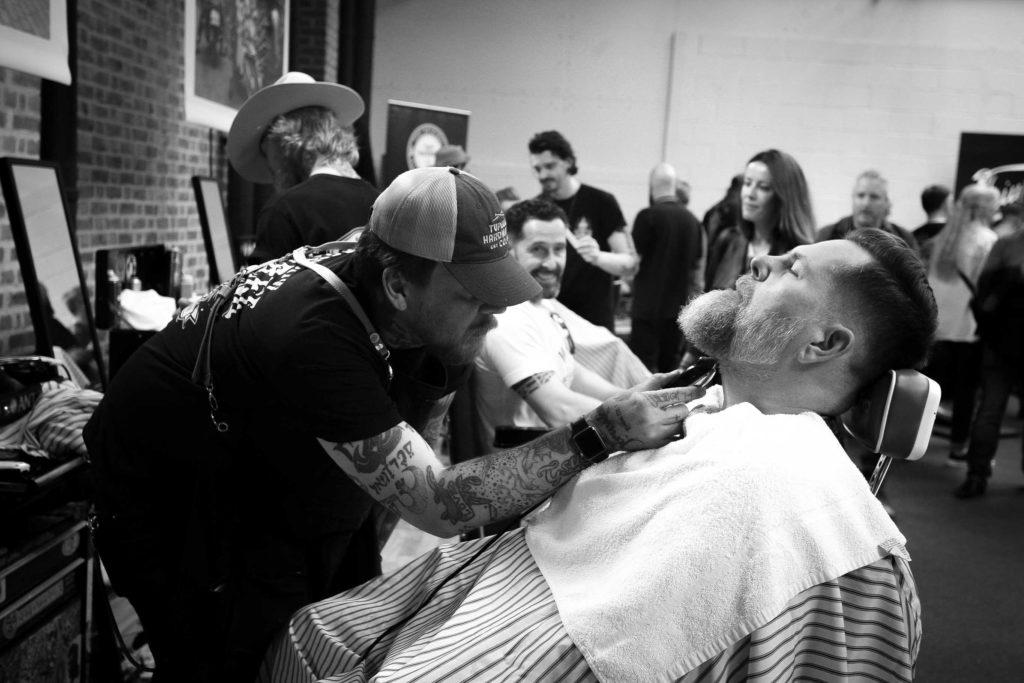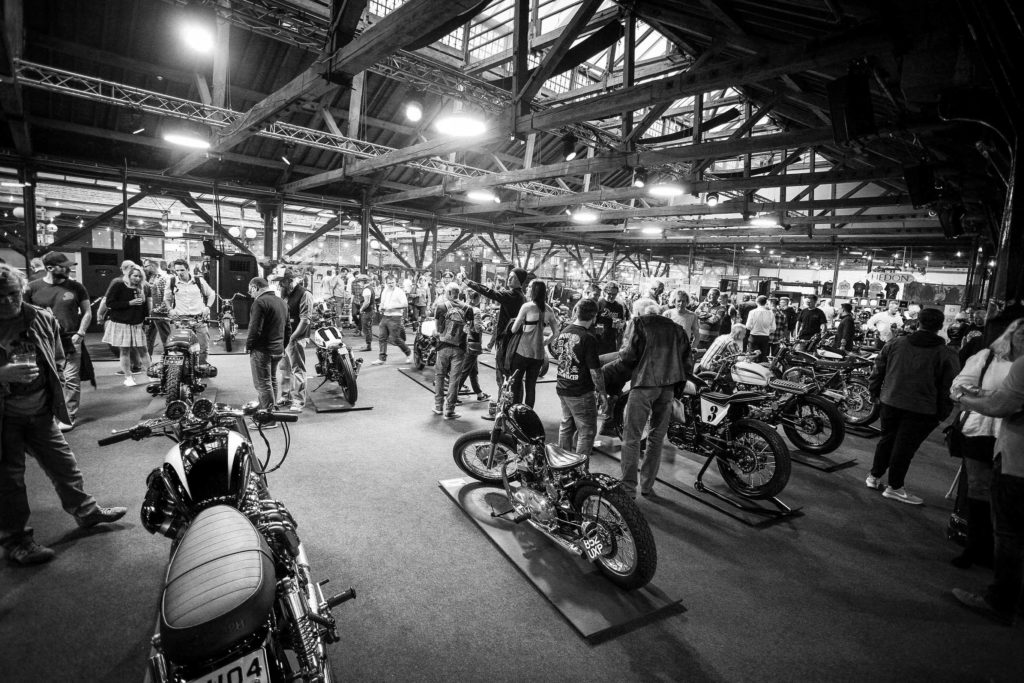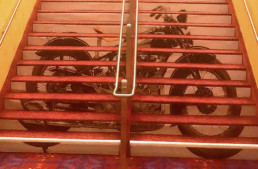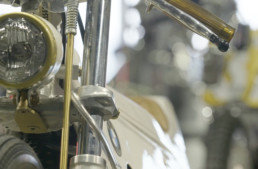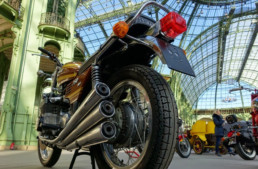Special to The Vintagent by David Lancaster
Great cities are marked by great contrasts. I can’t have been the only one riding between two major events last weekend, picking through hot London traffic, who was struck by how far apart they were. The more famous, and much older, is the Chelsea Flower Show – which every May sees the A-list, B-list and green-fingered descend in blazers and other finery to marvel at the innovation, skill, devotion and colour on show. And just a few miles to the east, a very different crowd descends to the Bike Shed London event to marvel – yes, you’ve guessed – at the innovation, skill, devotion and colour on show. But far as I know, the Chelsea Flower Show is yet to host tattoo parlours, panel bashing or beard trimming on site. Maybe next year. [There’s hope! – pd’o]
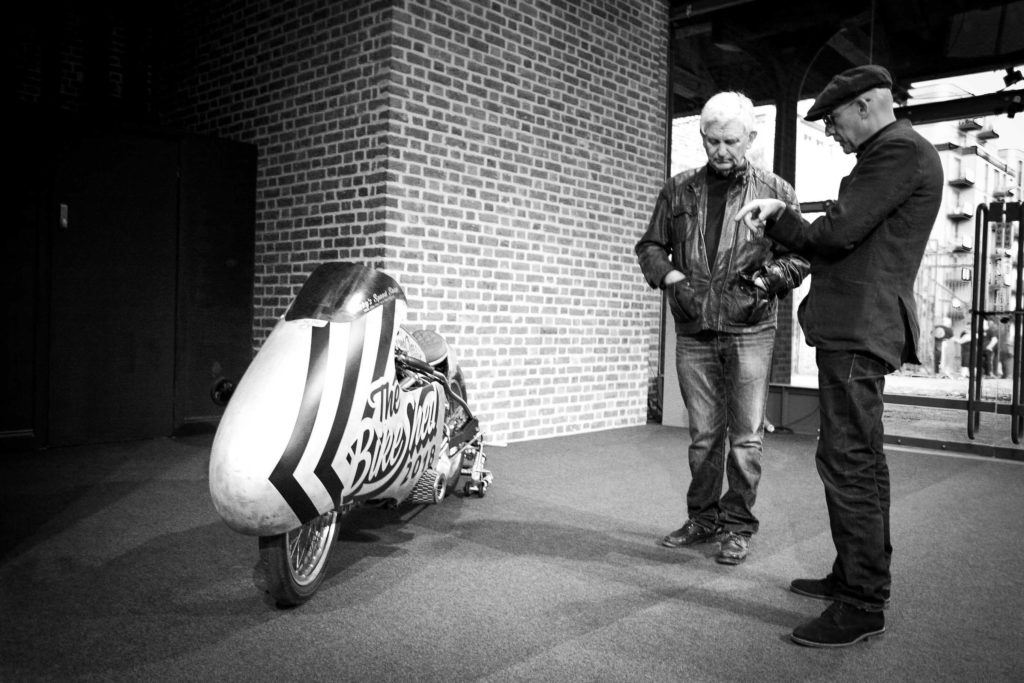
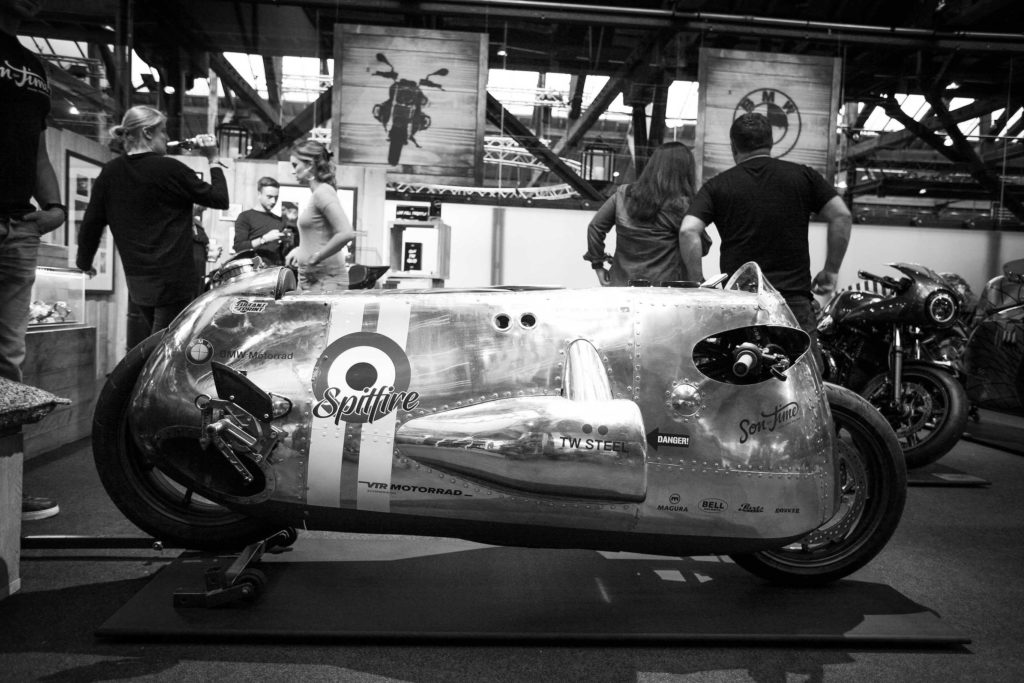
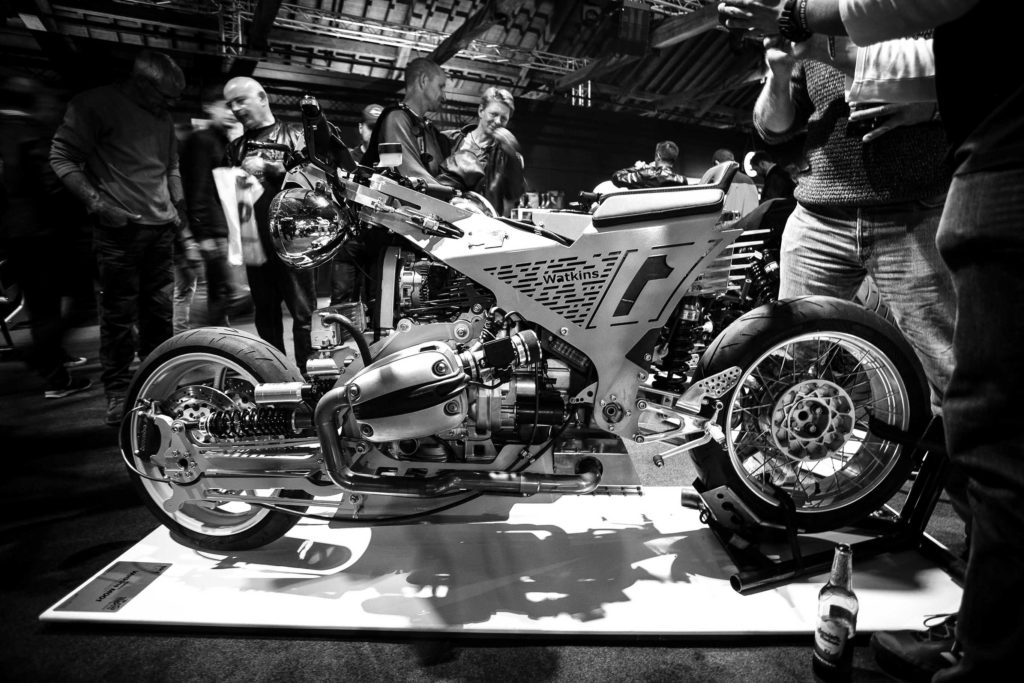
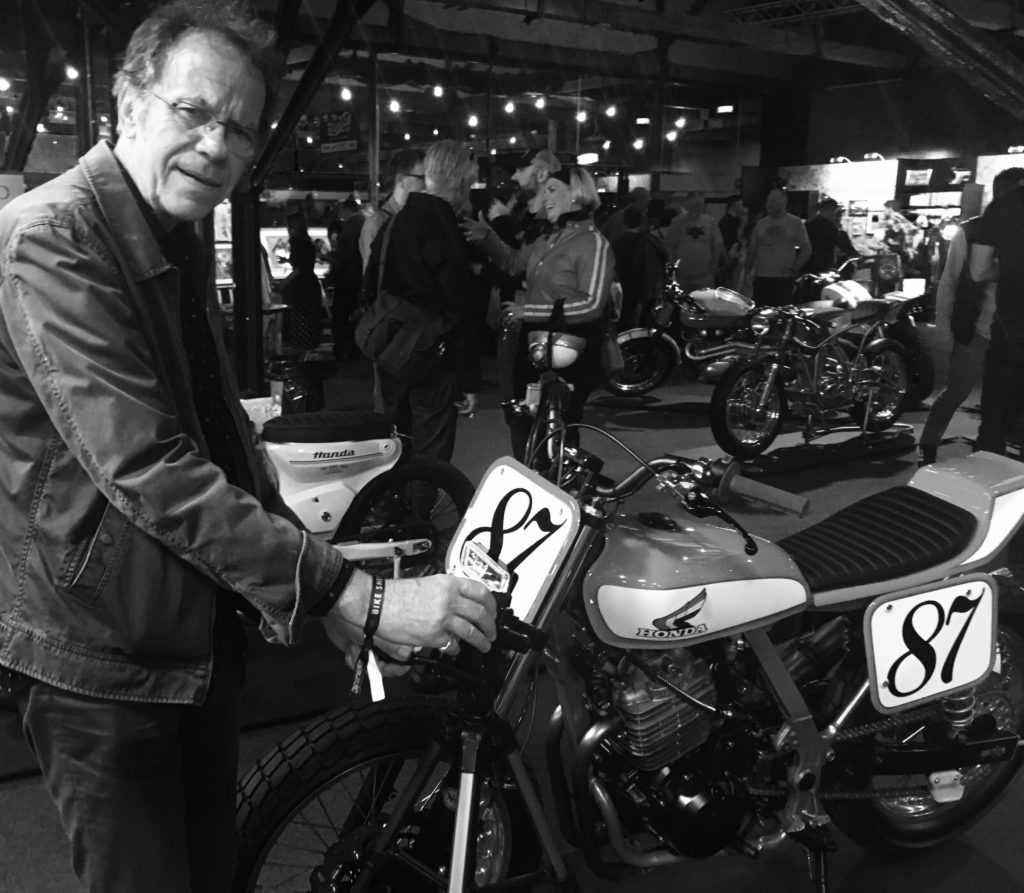
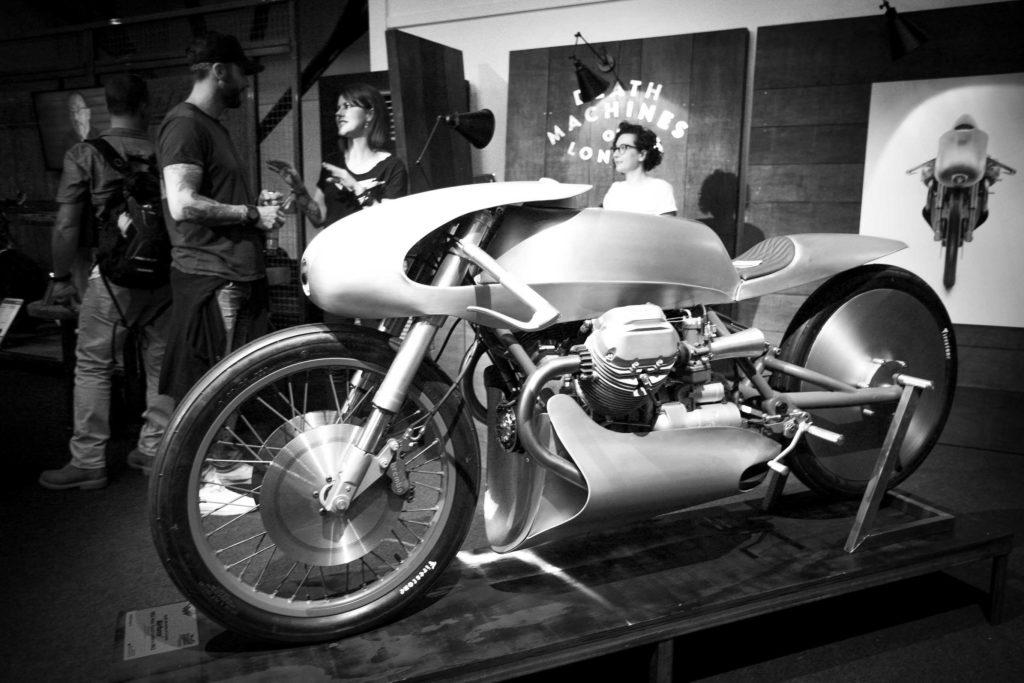
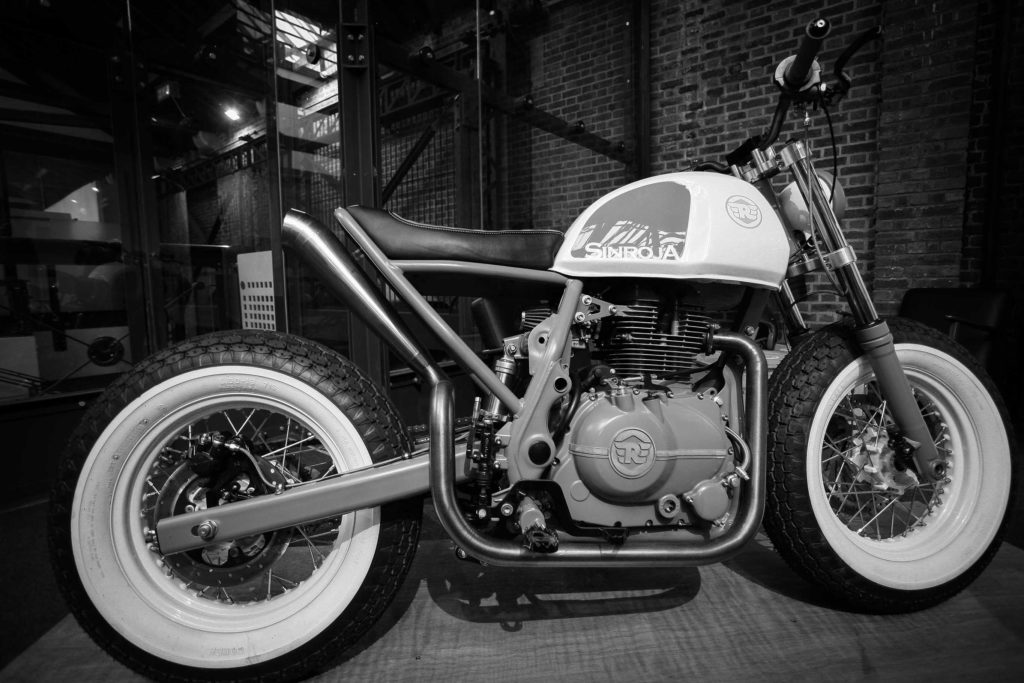
Royal Enfield-based special the R10 [Dave Norvinbike]
